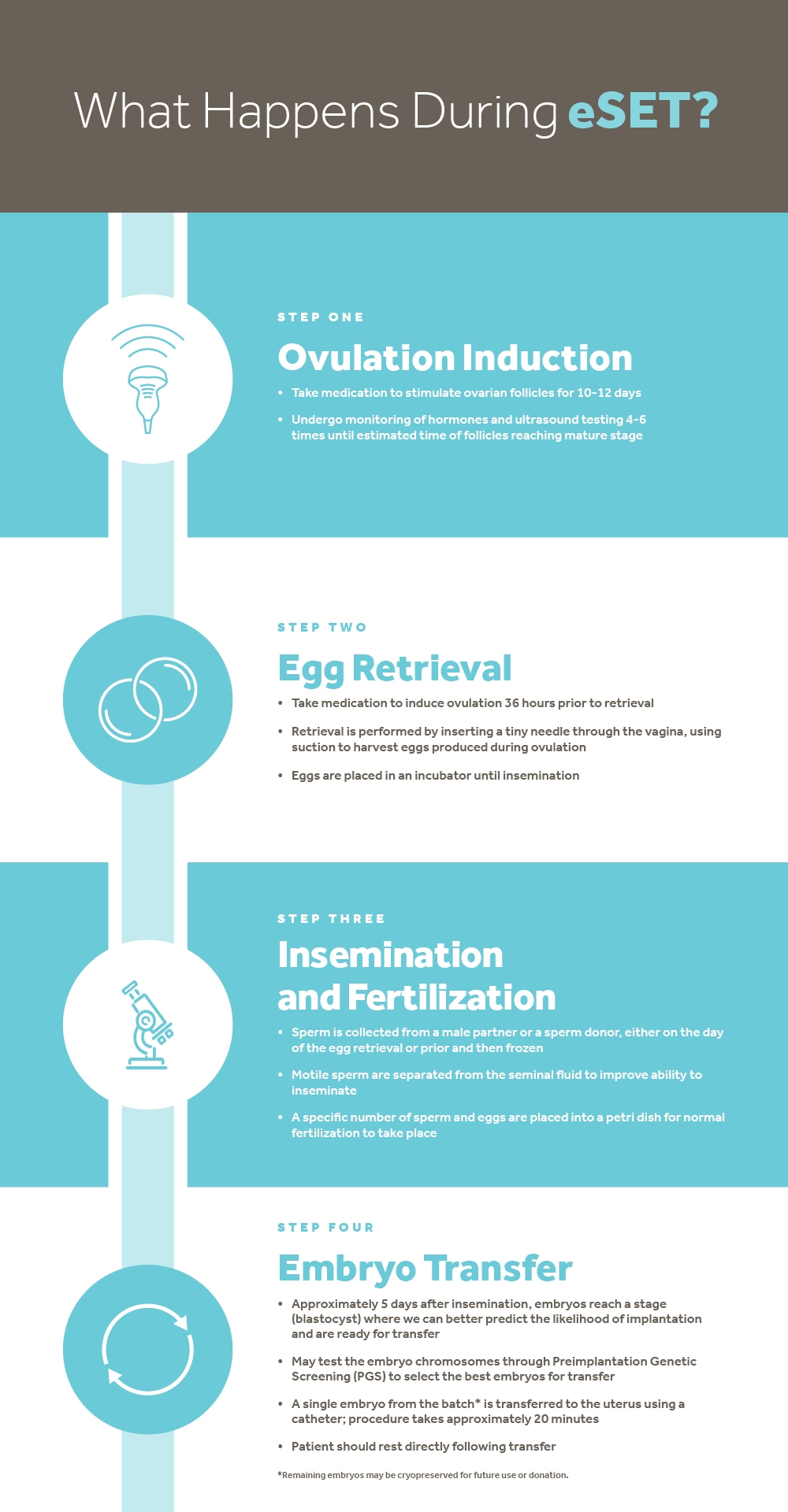CONSIDERING ESET: PART 2
Elective single embryo transfer (eSET) is one of a variety of possible courses of treatment for couples struggling with infertility. eSET is a form of in vitro fertilization (IVF) that uses only one embryo, which consists of an egg and a sperm joined in a lab. The primary benefit to eSET is that it improves the safety of IVF by reducing the risk of multiple births that comes with standard IVF.
If you already have the basic facts about eSET you may be wondering how it actually works. Below is the step-by-step process you will experience if you undergo eSET. A fertility specialist can further discuss these steps in detail with you.

Daily doses of progesterone help increase the chance of implantation. A pregnancy test is typically done 10-14 days after transfer.
The process for standard IVF is the same as above, except that at the embryo transfer, depending on embryo health and development, the physician may recommend transferring more than one embryo. The specific number of embryos to transfer is usually a joint decision determined by the fertility specialist and the couple.
Questions? Contact us.

